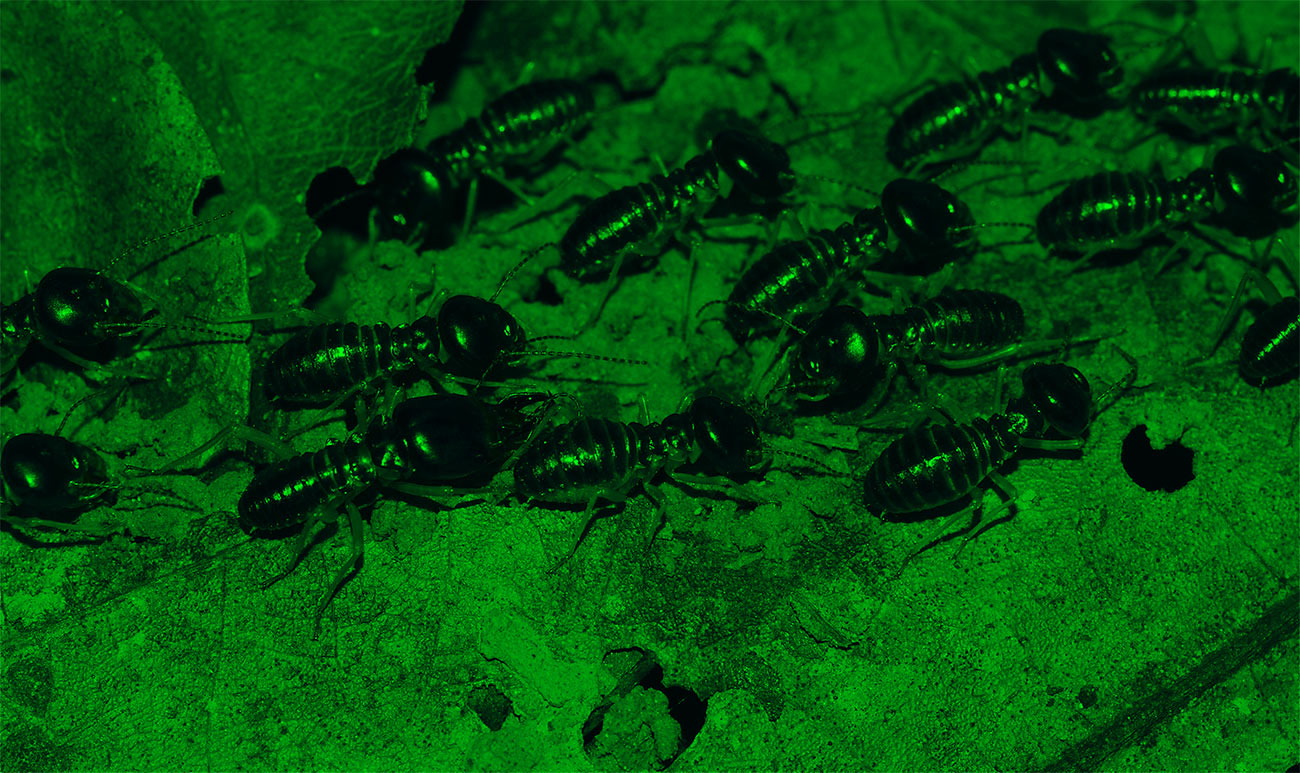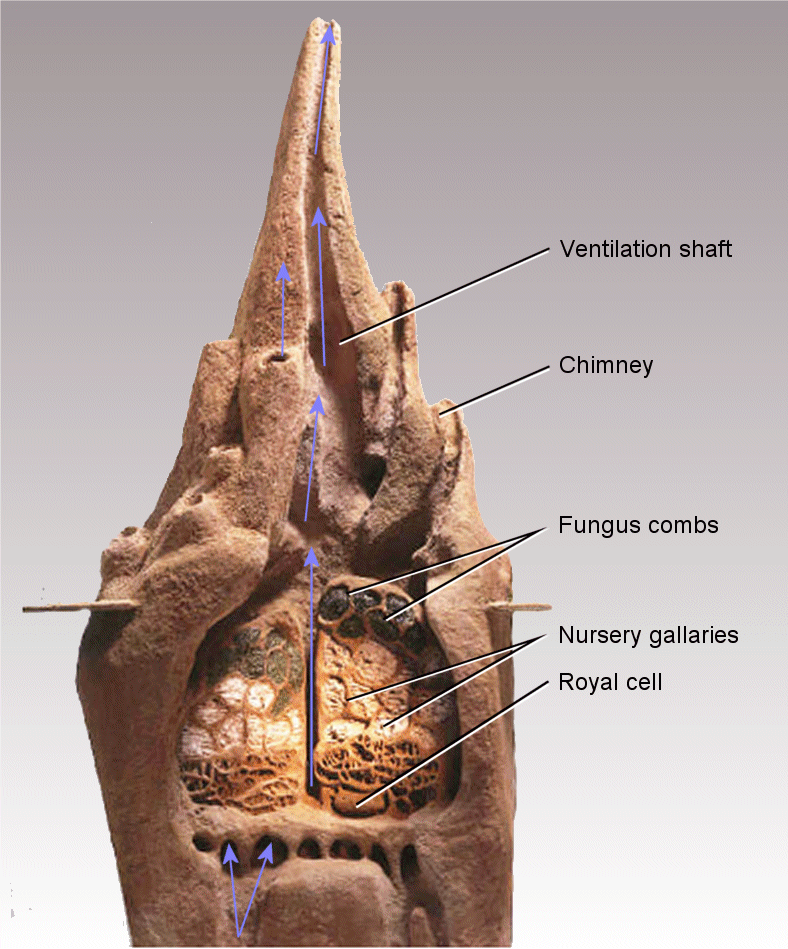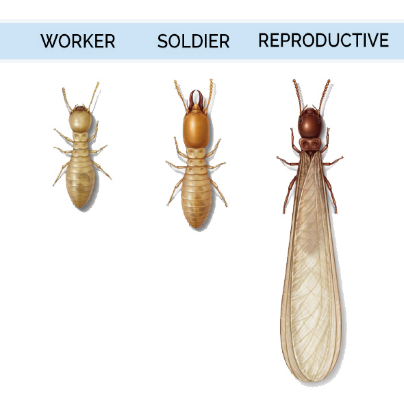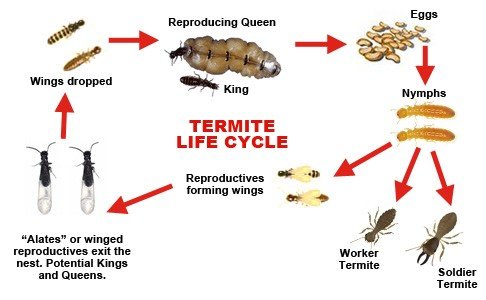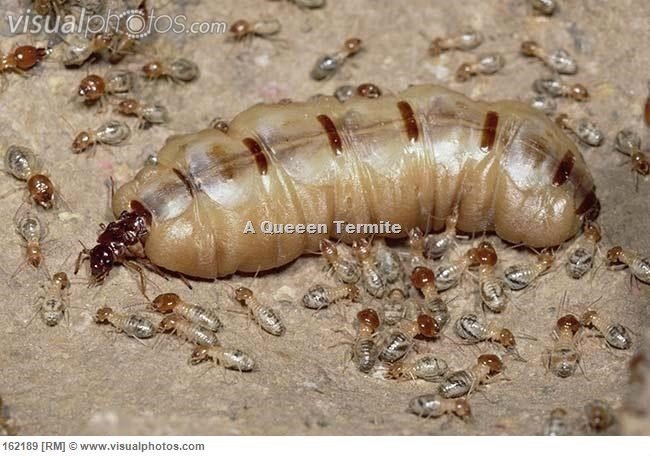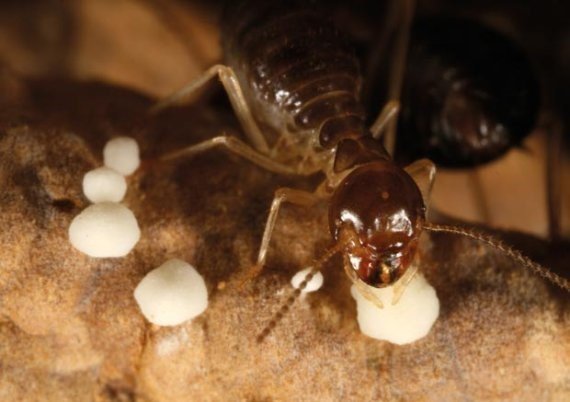Termites are insects belonging to phylum Arthropoda and order Insecta. Insects generally have 6 legs and 1 or 2 pairs of wings. There are few insect groups which have permanent aggregations. They are called social insects. There are 4 insect groups having this kind of a complex behavior. They are termites (order Isoptera), bees, wasps and ants (order Hymenoptera). Their social organization has evolved to the highest degree and it is termed as “eucosociality”. Hence, it is defined by the following characteristics,
- Cooperative brood care (individual look after the progeny of others)
- Overlapping generations
- A caste system defined by Polymorphism and division of labor
Termites are wood dwelling insects capable of constructing complex and enormous mounds. They are the world’s most indigenous builders. They build high-rises without any technical device. However, they are also seen as one of the most annoying pests homeowners can endure, for this reason, many homeowners and renters look to companies such as this ibex pest control service for termite extermination before the termites cause some serious damage to structures.
Also they are the world’s only animal which has managed to build an air conditioning system without electricity. The top of the mound consists of a central chimney which is surrounded by an intricate network of tunnels and passages. Air travels through the porous walls into a series of small tunnels until it reaches the central chimney and rises up. When fresh air mixes with this warm air, the air cools and sinks down into the nest. This ventilation system constantly circulates the air and ensures that oxygen reaches the lower areas of the mound and keeps the nest from overheating.
Their mound contains many chambers such as a nursery, fungal gardens and a royal chamber.
Termites have 2 major castes. One is the reproductive caste which includes both primary and supplementary reproductives. The other is the sterile caste which contains both workers and soldiers.
The primary reproductive are the queen and the king which participate in reproduction. The supplementary reproductives are also capable of egg production but are temporarily prevented by doing so in the presence of the queen. The workers are sterile wingless and blind males and females having less sclerotized bodies. Their jobs are cleaning, foraging and nest construction. They live up to 2 years. The soldiers are again sterile, wingless and includes both males and females. They have large mandibles and heavily sclerotized bodies for defending the colony. They are being fed by the workers.
The queen was once a female with wings and after the emergence of wings they fly up to the sky and find a mate. Then they find a suitable place to start a colony. They take off their wings, go underground and never come up again. The queen and the king are the founders of the colony and stays with each other for the rest of their lives, mating, producing about 30,000 eggs per day!! She is a reproductory machine; a super individual and the mother of all individuals in the colony. She grows up to 17mm in length and the largest queen that had been found measured up to 10cm long. She lives up to nearly 50 years. The king is half of her size.
The workers belonging to the sterile caste who are the queen’s children clean her and feeds her because she is unable to move with a morbidly obese body. The eggs that she lays are collected by the workers from the royal chamber that the queen lives in and are kept in the nursery where they will be looked after by the workers until they turn into adults.
The supplementary reproductives replace the queen when she dies or she is old. The supplementary reproductives are prevented from reproducing in the presence of the queen by a pheromone (a chemical substance) that she produces. When she is old the pheromone production becomes deteriorated and the supplementary reproductives are no longer inhibited from reproducing and becoming the new queen by replacing the old queen.
Termites also have a symbiotic association with a special fungus named Termitomyces which is found only in association with the termites but nowhere else in the world. The fungus makes the vegetation they collect digestible and the termites are like farmers maintaining the fungal comb by continuously adding partially digested plant material that has passed through the termite gut along with asexual Termitomyces spores.
The fungus gets a substrate to grow and flourish in.
References
Figures
Fig.01 : https://s-media-cache-ak0.pinimg.com/originals/42/a7/58/42a75870875836c25b4016809e43dbca.gif
Fig.02 : http://www.domyownpestcontrol.com/product_thumb.phpimg=images/content/what_color_are_termites.png&w=1118&h=1034
Fig.03 : http://lifeafterbugs.com/wp-content/uploads/2015/02/termite_lifecycle.jpg
Fig.04 : http://urbanconnectionrealty.com/wp-content/uploads/2014/03/termite-info-in-phoenix-az.jpg
Fig.05 : http://resource.wur.nl/en/show/Termites-travel-with-fungi-as-takeaway-food.htm
Articles
- Rouland-Lefèvre, C. [Symbiosis with fungi.] Termites: evolution, sociality, symbioses, ecology[Abe T., Bignell D. E., Higashi M. (eds.)] [289–306] (Kluwer Academic Publishers, Dordrecht, 2000).
- Nobre, T., Rouland-Lefèvre, C. & Aanen, D. K. [Comparative biology of fungus cultivation in termites and ants.] Biology of Termites: a modern synthesis[Bignell D. E., Roisin Y., Lo N. (eds.)] [193–210] (Springer, Heidelberg, 2011).
Websites: http://www.pbs.org/wnet/nature/the-animal-house-the-incredible-termite-mound/7222

